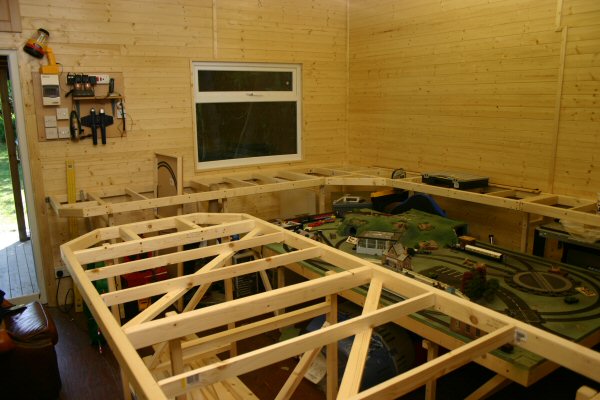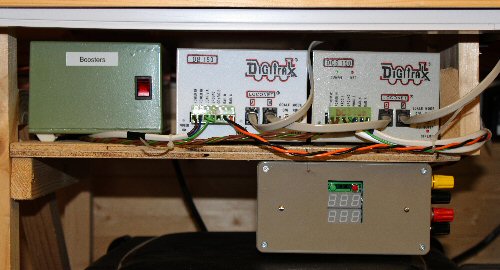no_category
Once upon a time, I planned to write an article a month for the website about progress. Then I did nothing for 9 months, and started again. Then the same thing happened again. although I had made progress, it didn't fit the way I wanted to write about it and somewhere along the way I planned to rewrite the web page.
We now have a different web site. It allows me to write "blog" entries (whatever they are) simply and painlessly. I can write as much or as little as I like as often as I like. So no "two sides of text or nothing". That's why this section is in two halves: the "old" method and the "new" method.
This is what the railway is all about - the trains that run on it. To an extent, the rest is just there to give the trains somewhere to go.
My railway is set in no world or time. I will have trains from anywhere, from any era, although it is supposed to be loosely set in the south of England. Trains visit from other parts of the country, surely? And steam trains still run on today's railways as excursion specials?

I'm not a modeller per se. I expect in 10 years to find that the rolling stock is still all shop bought. I have models from Graham Farish, Dapol, Tomix, Bachmann USA and Kato so far. What I am doing is changing to MicroTrains couplings, and investing effort to make the running very reliable. I'm slowly building up knowledge of what it is that prevents reliable running, and even the most poorly running models have one way or another being transformed.
This section collects information about the rolling stock and the modifications made to it. There is information about DCC decoder installation (not the art it used to be!), wheelset modifications and coupling upgrades.

People who know how model railways are made may be able to sketch out a layout, and go on to construct it with little by way of planning. I was new to railways, and couldn't do that: I needed a plan. That was undertaken at several levels.
- A simple sketch drawn to scale allowed me to choose a mechanical layout to get the most railway into the space available.
- A railway CAD program was used to get an accurate track plan, and from that an accurate baseboard design
- Careful records on spreadsheets have been used for the electrical side of the house
- This website holds the locomotive roster!
So, definitely not "once tool for everything" - instead I think I used what was to hand in sensible ways. The outcome is a robust understanding of what I've made, and records to support maintenance long into the future.

This has been - and remains - an extended process. Once there was a robust design, I constructed the baseboards quite quickly. Track laying followed much more slowly and methodically, and the early wiring was even slower. Once I had a routine in place I was able to speed up, and the fiddle yard - technically the most complex section - was completed in a fortnight.
This section provides background to the "mechanical" side of the layout. There is nothing clever or original in the way this has been approached!

This section describes how DCC has been used to control the railway. This was not, really, a controversial decision. I'm a techie; the railway is new; and it is large requiring control of tens of track sections. DCC was an obvious choice to me; I recognise that it isn't right for everyone.
But DCC is just the beginning: there's a lot more to control of this railway than just DCC. The power is sectioned into zones, with power management - this means that a short in one area doesn't remove power everywhere (DCC can be a blunt instrument in that regard). The track has occupancy detection, so that "the system" knows what track sections have trains in them. The points are DCC controlled - that isn't terribly unusual nowadays. The signals are (or will be) fully automatically controlled: that means a signal will go red when a train drives past it with no human or computer intervention. If the track ahead is blocked by a point set against it - the signal is red. If the signal in front is red, the one behind is orange; again all with no intervention.
The thing that enables all of this to happen isn't DCC. DCC itself plays its part, but it is only a component of a successful system. The real enabler is the command bus and its accessories. This is a Digitrax system, with LocoNet as the command bus and accessories from CML Electronics. The combination makes a very powerful system!

